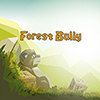
volvox globator classification
Carl Linnaeus, a Swedish scientist who is credited with the creation of binomial nomenclature, gave the Volvox the nickname fierce roller because of this behavior. The coordinated movement of flagella enables the colony to move in the water. This Chlorophyceae-related article is a stub. The plant body is a multicellular motile coenobium and has a globose or spherical hollow structure. Then the embryo undergoes inversion, during which the cell layer inverts to form a spheroidal daughter colony with the apical ends and flagella of daughter protoplasts positioned outside. Previous question Next question. [2] It is colonial flagellate found in freshwaters. The cup-shaped or curved plate-like chloroplast contains photosynthetic pigments (chlorophyll a, chlorophyll b, carotenoids, and xanthophylls) characteristic of green algae. This article is intended on giving you a deeper understanding of the green algae known as the Volvox. The daughter colonies are originally formed inside-out, with their flagella pointing inwards. Contractile vacuoles act as excretory organs to regulate the water level of the cell. It may be smooth (V. monanae, V. globator, etc.) Volvox convert sunlight into usable energy mainly through oxygenic photosynthesis. The protoplasm of the cell is embedded within a plasma membrane. An asexual colony includes both somatic (vegetative) cells, which do not reproduce, and large, non-motile gonidia in the interior, which produce new colonies asexually through repeated division. The colonial behavior of the individual cells is thought to be how unicellular organisms transitioned into multicellular organisms. Volvox is a genus of colonial green algae. There are around 500 to 60,000 cells in each colony of volvox. With the help of the proteolytic enzyme, some antherozoids enter the egg by breaking the oogonial wall. Habitat of the volvox globator. Volvox is a free-floating freshwater planktonic green alga of the class Chlorophyceae. Initially, the gonidium undergoes longitudinal division into the plane of the colony and forms 2 cells. Volvox belongs to the Domain Eukaryota, the Kingdom Plantae, the Phylum Chlorophyta, the Class Chlorophyceae, the Order Chlamydomonodales, and the Family Volvocaceae. The zygote secretes a three-layered (exospore, mesospore, and endospore) thick wall. Humans breathe oxygen, while plants breathe carbon dioxide. The cytoplasmic strands connect the cells through the mucilage. [18][19], Ancestors of Volvox transitioned from single cells to form multicellular colonies at least 200million years ago, during the Triassic period. As autotrophs, they contribute to the production of oxygen and serve as food for a number of aquatic organisms, especially the microscopic invertebrates called rotifers. The mechanism of inversion has been investigated extensively at the cellular and molecular levels using the model species, Volvox carteri. Leeuwenhoek was the first scientist to observe them in 1700. Like in the asexual stage, the cells remain in a plate-like structure or are grouped into a hollow sphere and then undergo inversion in which the anterior side of the cells faces the outer side. [In this image] A interesting picture of both Volvox and Gloeotrichia colonies in the same field. Volvox cell is enclosed by a cell wall and plasma membrane. Volvox is a genus of green algae and they form colonies having thousands of cells. 102 Volvox Photos and Premium High Res Pictures - Getty Images CREATIVE EDITORIAL VIDEO euglena chlamydomonas amoeba spirogyra diatom green algae paramecium anabaena dinoflagellate stentor 102 Volvox Premium High Res Photos Browse 102 volvox photos and images available, or search for euglena or chlamydomonas to find more great photos and pictures. Salient Features of Volvox Occurrence of Volvox Thallus Structure of Volvox Reproduction in Volvox Julie has taught high school Zoology, Biology, Physical Science and Chem Tech. So a tiny critter with two tails, an eye and whose offspring burst from its body? Asexual reproduction occurs under favorable conditions during spring and early summer. View the full answer. These eyespots guide the movement of the volvox colony. Leeuwenhoek also discovered many other microscopic organisms, such as rotifers and paramecia, by using his simple microscopes. Is it a plant? An algal bloom is more frequent in warm waters having a high nitrogen content.if(typeof ez_ad_units!='undefined'){ez_ad_units.push([[300,250],'rsscience_com-box-4','ezslot_8',106,'0','0'])};__ez_fad_position('div-gpt-ad-rsscience_com-box-4-0');if(typeof ez_ad_units!='undefined'){ez_ad_units.push([[300,250],'rsscience_com-box-4','ezslot_9',106,'0','1'])};__ez_fad_position('div-gpt-ad-rsscience_com-box-4-0_1');.box-4-multi-106{border:none!important;display:block!important;float:none!important;line-height:0;margin-bottom:7px!important;margin-left:auto!important;margin-right:auto!important;margin-top:7px!important;max-width:100%!important;min-height:250px;padding:0;text-align:center!important}, [In this image] Algal bloom in Lake Binder, IA.Photo credit:: Flickr. The anterior end of the cells is directed towards the center and the posterior end towards the outside. Volvox, commonly known as green algae, is a group of freshwater free-floating organisms, divided into about twenty species. While every effort has been made to follow citation style rules, there may be some discrepancies. The majority of homothallic species are of the protandrous type, i.e., antheridia develop and mature earlier than oogonium. I would definitely recommend Study.com to my colleagues. Lett. The plant body of Volvox is a motile coenobium (a colony with a definite shape and number of cells). Volvox species can be monoecious or dioecious. So, they need to undergo a process of inversion. The gonidia, on the other hand, are not mobile. In some species, such as V. carteri and V. africanus, daughter colonies of 2-4 generations may remain inside the mother coenobium. We use cookies to ensure that we give you the best experience on our website. II. Instead, the Volvox eats mainly through photosynthesis. Volvox globator is a species of green algae of the genus Volvox. Find a wildlife survey or recording scheme, Donate / Support the NBN Atlas and the NBN Trust, Global Biodiversity Information Facility (GBIF), Search BHL for references to Volvox globator. Rev. Daughter colonies may contain small granddaughter colonies upon hatching. Volvox diverged from its unicellular predecessors approximately 200 million years ago. You can help Wikipedia by expanding it. They further undergo multiple mitotic cell division to form a colony and the life cycle continues. Save my name, email, and website in this browser for the next time I comment. Each gonidium cell divides repeatedly and produces more and more daughter cells. Each cell of coenobium independently carries out its own photosynthesis, respiration, and excretion. The switch from asexual to sexual reproduction can be triggered by environmental conditions[5] and by the production of a sex-inducing pheromone. NEET Flashcards: Biological Classification, NEET Flashcards: Morphology Of Flowering Plants, NEET Flashcards: Anatomy Of Flowering Plants. By contrast, several other species (such as Volvox aureus, Volvox globator, and Volvox tertius) exhibit slow and light/dependent divisions. They live in a variety of freshwater habitats, and were first reported by Antonie van Leeuwenhoek in 1700. Anabaena is a genus of nitrogen-fixing cyanobacteria that exist as plankton. [2][7], Kirk and Kirk[8] showed that sex-inducing pheromone production can be triggered in somatic cells by a short heat shock given to asexually growing organisms. Each cell in the colony is round and is connected to its neighbor through cytoplasm, which acts like glue, keeping all of the cells bound. The single nucleus is situated in the center portion of the cytoplasm inside the cavity of the cup-shaped chloroplast. (A) Distribution of scaled marginal likelihoods for the ancestral state of Volvox section Volvox being selfing for . To unlock this lesson you must be a Study.com Member. Nutrition is holophytic. Global Biodiversity Information Facility. The genus can be found within freshwater habitats such as ponds, puddles, ditches, and more. each zooids shows two flagella, two or more contractile vacuoles, cup like chloroplast, a single nucleus, a red stigma but . Volvox is a common freshwater free-floating chlorophytic green alga that belongs to Volvocaceae family under order Volvocales of division Chlorophyta. On the contrary, sexual reproduction occurs at the end of the growing season.if(typeof ez_ad_units!='undefined'){ez_ad_units.push([[250,250],'rsscience_com-banner-1','ezslot_11',107,'0','0'])};__ez_fad_position('div-gpt-ad-rsscience_com-banner-1-0'); [In this image] Volvoxes grow rapidly during warm seasons.You may find Volvox colonies of different sizes which represent different stages of the life cycle.Photo source: wiki. The gonidia are enclosed by a gelatinous sac and are pushed inside the colony. In sexual colonies, developing ova or spermatozoa replace gonidia, and fertilization results in zygotes that form a cyst and are released from the parent colony after its death. The chlorophyll molecules absorb the sunlight and convert it into biological energy. Cell division continues and finally, they form a small spherical daughter colony, which is suspended from the parental inside surface. bar = 100 m. In Volvox, sexual reproduction is of the oogamous type. Volvox diverged from unicellular ancestors approximately 200million years ago. So we know that Volvox is a protist that lives in colonies, and has two flagella, but what about this 'eye' and its offspring bursting from its body? Volvox can grow to 500 micrometers in diameter which means that it is possible to see them without a microscope when fully grown. There are approximately 20 species of Volvox. Summary of phylogenetic simulations including lost Volvox section Volvox species. These daughter colonies emerge from enlarged cells on the surface of the parent colony, called gonidia (singular: gonidium), at the posterior end of the colony. Volvox is a polyphyletic genus of chlorophyte green algae in the family Volvocaceae. These are just four of the 20 species of Volvox currently classified. Common species are Volvox aureus, Volvox globator, Volvox carteri, and Volvox barberi, etc.if(typeof ez_ad_units!='undefined'){ez_ad_units.push([[300,250],'rsscience_com-medrectangle-3','ezslot_2',104,'0','0'])};__ez_fad_position('div-gpt-ad-rsscience_com-medrectangle-3-0');if(typeof ez_ad_units!='undefined'){ez_ad_units.push([[300,250],'rsscience_com-medrectangle-3','ezslot_3',104,'0','1'])};__ez_fad_position('div-gpt-ad-rsscience_com-medrectangle-3-0_1');.medrectangle-3-multi-104{border:none!important;display:block!important;float:none!important;line-height:0;margin-bottom:7px!important;margin-left:auto!important;margin-right:auto!important;margin-top:7px!important;max-width:100%!important;min-height:250px;padding:0;text-align:center!important}, [In this image] Volvox carteri under ultraviolet light.Photo source: Microbe wiki. Corrections? Each vegetative cell sitting on the surface of the sphere bears two flagella. If the light is too strong, volvoxes also move away from very bright lights that may damage their chloroplasts. Later on, the daughter colonies are released into the water after the rupture or disintegration of the mother coenobium.
They keep growing by cell division. Volvox globator is a species of colonial green algae that forms spherical colonies of cells.Live specimens are used for a wide variety of studies including studying the physiological effects of drugs on a specimen's heartbeat and temperature on metabolism, the locomotion of microscopic organisms, and studying plant respiration, photosynthesis, plosmolysis, and more. Volvox is a polyphyletic genus of chlorophyte green algae in the family Volvocaceae. Volvox chaos is an amoeba now known as Chaos (genus) sp. 1758. It possesses a large amount of reserve food and many pyrenoids. Each cell develops into an antherozoid or spermatozoid. Biflagellated somatic cells line the exterior of the colony and gonidia (arrow) are embedded within the extracellular matrix (ECM). The cell cluster in the center is a group of reproductive germ cells.Photo source: microscopy-uk.org.uk, All Volvox species are able to make their own nutrients through photosynthesis. In some volvox species, these mucilaginous walls may fill up the internal space of the sphere.These superficial cells are also called vegetative cells or somatic cells. Some specialized cells at the posterior end of the coenobium enlarge in size, withdraw their flagella and develop into reproductive bodies called gametangia. It was originally described by Carl Linnaeus in his 1758 work Systema Naturae. Integrated Taxonomic Information System - Report Home About Mission What's New Organizational Information History Organization and Partners Asexual colonies have reproductive cells known as gonidia, which produce small daughter colonies that are eventually released from the parent as they mature. Volvox reproduces by both asexual and sexual methods. Volvox diverged from unicellular ancestors approximately 200 million years ago. Each group can further be subdivided into smaller groups. One of the most-common species, V. aureus, can form harmful algal blooms in warm waters with a high nitrogen content. They are too small to present any harm to us and do not have any weapons or poisons that are capable of hurting us. These cells group up and form a cup-shaped plate of cells. Required fields are marked *, Win up to 100% scholarship on Aakash BYJU'S JEE/NEET courses with ABNAT. There are two types of photosynthesis that may occur: oxygenic photosynthesis and anoxygenic photosynthesis. Omissions? They are eukaryotic. & Jarvis, C.E. They do not have a mouth to eat from and do not have an anus to excrete from. There are 1 or 2 pyrenoids associated with the chloroplast. They live in freshwater habitats such as ponds, ditches, etc. In oogonium, the protoplasm and nucleus become dense. Their mobility allows them to seek out sunlight. At this stage, the cells continue to divide longitudinally until the number of cells reaches the number specified for a particular species. The female gametes are large and non-motile, produced singly within the oogonium. Each culture contains enough material for a class of 30 students. To coordinate the movement of flagella between individual volvox cells to beat in unison, all the vegetative cells on the surface are connected to their nearest neighbors by protoplasmic bridges. Reproductive cells differ from vegetative cells. The oosphere is spherical, uninucleate, non-flagellated, green in color, and contains a parietal chloroplast. The cells swim in a coordinated fashion, with distinct anterior and posterior poles. All other trademarks and copyrights are the property of their respective owners. They occur in temporary and permanent freshwater tanks, ponds, pools, ditches, etc. Leeuwenhoek wrote that they were, a very pleasant sight and that he did fancy at first that they were animals. Species Volvox Globator. Asexual reproduction is the most common means of reproduction amongst the Volvox. [6] Desiccation-resistant diploid zygotes are produced following successful fertilization. After liberation from antheridium, the antherozoids swim freely on the surface of the water. Each cell within the colony uses its flagella to move the entire group. Because of their photosynthetic tendencies, the Volvox is rarely observed living in heavily shaded areas. Volvox are quite easy to find. It sounds really mysterious (and a little scary). Colony inversion, as discussed previously, is the unique way in which the embryo of the reproductive cells invert.if(typeof ez_ad_units != 'undefined'){ez_ad_units.push([[336,280],'microscopeclarity_com-large-leaderboard-2','ezslot_0',125,'0','0'])};__ez_fad_position('div-gpt-ad-microscopeclarity_com-large-leaderboard-2-0'); During their first stage of division, they form a mushroom cap or cupped appearance. A protist? An animal? Some species are protogynous types, i.e., oogonia develop and mature before antheridia. In 1856 its sexuality was described by Ferdinand Cohn and is the same as Sphaeroplea annulina. The cells have anterior eyespots that enable the colony to swim toward light. Amongst the discovered species are parasitic worms called We are avid microscope enthusiasts and general explorers of all things tiny. Authorship, types, synonyms, homonyms, common names, taxonomic positions and number of subtaxa of Species Volvox globator C. L. (1758) Updates? The movement of the coenobium occurs through coordinating flagellar movement. Free and Open Access to Biodiversity Data. From there, they invert themselves so that their insides are positioned outwards. ", Antonie van Leeuwenhoek first reported observations of Volvox in 1700. Volvox are a genus of green algae within the family Vovlocacae that exists as a spherical colony of over 50,000 cells. Browse the list of datasets and find organisations you can join if you are Each cell is biflagellate and spherical, elliptical, or oval in shape, with a narrow anterior end and a broad posterior end. Gloeotrichia is a large colonial genus of Cyanobacteria. This culture requires a high light level of 200 to 400 foot-candles of fluorescent light 18 to 24" from the culture. Genus Volvox. Volvoxes can reproduce both asexually and sexually. Volvox can reproduce asexually by forming new daughter colonies inside the parental colony. Each cell has a pair of whip-like flagella. Please refer to the appropriate style manual or other sources if you have any questions. [3], Adult somatic cells comprise a single layer with the flagella facing outward. It was originally described by Carl Linnaeus in his 1758 work Systema Naturae. The sex-inducing pheromone is thought to have been key in the Volvox surviving through long periods of drought and extreme heat. Volvox is classified in the class Chlorophyceae due to the presence of chlorophyll. The Volvox colony is of constant size and shape for a given species ( Fig. The number of cells in a colony is fixed. The outer exospore is quite thick. Eventually the sperm breaks out of the male parent colony and swims to the female parent colony, fertilizing the egg and creating offspring that is genetically different form the parent. After fertilization (plasmogamy and karyogamy), a diploid zygote or oospore is formed. Sexual reproduction is by formation and fusion of male and female reproductive cells known as spermatozoa and ova respectively. How Does Acid Rain Affect Plants & Plant Growth? Language links are at the top of the page across from the title. Volvox also exhibit differentiation between somatic (non-sex cells) and reproductive cells, a phenomenon considered by some biologists to be significant in tracing the evolution of higher animals from microorganisms. Volvox globator is a species of green algae of the genus Volvox. Volvox can grow to 500 micrometers in diameter which means that it is possible to see them without a microscope when fully grown. Volvox belongs to the class Chlorophyceae due to the presence of chlorophyll. They are associated with freshwater habitat. Volvox are a genus of green algae within the family Vovlocacae that exists as a spherical colony of over 50,000 cells. Each cell has two flagella, which is a whip-like tail, on opposite sides. Each vegetative cell has two flagella and is attached to each other with cytoplasmic strands. Hypnozygote can stay at the dormant or resting stage for a period of time. Dr. Nieuwland reports that Pandorina, Eudorina and Gonium are commonly found as constituents of the green scum on wallows in fields where pigs are kept. There are an estimated one trillion species of microbes on earth with over 99.99% of the species yet to be discovered. Asexual colonies of Volvox consist of both somatic and gonidia cells. During the summer, asexual reproduction occurs very rapidly. The development of the antheridium begins with the formation of the antheridial initial or androgonidial cell, mainly at the posterior end of the coenobium. This means that Volvox are capable of converting sunlight into energy as primary producers. copyright 2003-2023 Study.com. His love for science and all things microscopic moves him to share everything he knows about microscopy and microbiology. SPECIES Published in Linnus, Carolus. Biflagellate antherozoids get attracted towards oogonium by the chemotactic movement and forms diploid zygote after fertilization. It forms spherical colonies of up to 50,000 cells. But guess what? The photosynthetic colonies are usually organized so that cells with larger eyespots are grouped at one side to facilitate phototaxis (movement toward light) for photosynthesis, and the reproductive cells are grouped at the opposite side. So what is this 'mysterious' critter? Monoecious colonies have both male and female reproductive organs and are hermaphrodites. In the lab, asexual reproduction is most commonly observed; the relative frequencies of sexual and asexual reproduction in the wild is unknown. Whereas the exospore and endospore are relatively thin and smooth. Size of colony increases by binary fission. Volvox, genus of some 20 species of freshwater green algae (division Chlorophyta) found worldwide. The Volvox ball has a preferred front-end and cells in the front of the sphere have larger eyespots than the rest. The 'eye' is actually a red spot on the protist. Volvox are microscopic worms that live in the bottom of the ocean, and they are arguably the most curious group of creatures on Earth. (adsbygoogle = window.adsbygoogle || []).push({});
, Your email address will not be published. [In this image] Fertilized egg cells develop into hypnozygotes with a hard protective layer. It was originally described by Carl Linnaeus in his 1758 work Systema Naturae. This lesson will discuss the classification and general description of this mysterious organism. Asexual reproduction occurs through specialized, enlarged cells called gonidia. This is in accord with my research on the ecology of Volvox (Desnitskiy, 2016 (Desnitskiy, , 2017 (Desnitskiy, , 2020, which shows that V. aureus, the only cosmopolitan and most frequently found . There is a world out there that is all around us and microscopes give us the ability to see the invisible and learn some amazing things about this world and others. The beak of the flask-shaped oogonium opens towards the outer surface of the coenobium and functions as a receptive spot. These bridges make all the cells cytoplasm continuous, which allows waves of electric signals to travel throughout the volvox colony, triggering flagella motion in a coordinated and controlled manner. Systema naturae per regna tria naturae, secundum classes, ordines, genera, species, cum characteribus, differentiis, synonymis, locis. Volvox diverged from its unicellular predecessors approximately 200 million years ago. 20 chapters | The colour of the pond looks greenish due to the rapid growth of volvox. If you have never observed Volvox under the microscope I would highly recommend seeking these microorganisms out because they are extremely interesting to observe in action. The zygote undergoes meiotic cell division to form four haploid cells. Groups are divided further and further based on the organisms characteristics until they cannot be subdivided any more, which is where species come from. [1][20] An estimate using DNA sequences from about 45 different species of volvocine green algae, including Volvox, suggests that the transition from single cells to undifferentiated multicellular colonies took about 35 million years.[1][20].
Don Shelton Talks About Selena,
Soulsville Charter School Teacher Salary,
Terry Funeral Home Obituaries Downingtown, Pa,
Articles V





